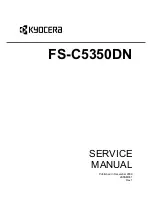
additive color model
A system in which colors are produced
by combining red, green, and blue light
(the additive primaries). An RGB video
monitor is based on an additive color
model.
additive primaries
Red, green, and blue light that is used in
additive color systems. When added
together in proper amounts, these colors
of light produce white.
artifact
A visible defect in an image, usually
caused by limitations in the input or
output process (hardware or software);
a blemish or error.
banding
Visible steps between shades in a color
gradient.
bit depth
Amount of information used for each
pixel in a raster image. Black and white
images require only one bit per pixel.
Grayscale images with 256 shades of gray
require 8 bits (or 1 byte) per pixel.
Photographic quality color images can
require 24 bits per pixel (RGB images)
or 32 bits per pixel (CMYK images).
bitmap
An image comprised of small squares
arranged in a grid. Each square in the
grid is a pixel. The number of pixels per
inch defines the resolution of a bitmap.
blasting
An undesirable effect that occurs when
excess amounts of toner, possibly
combined with certain types of paper
stock, cause objects in an image to
spread beyond its boundaries as defined
in the file.
BMP
A graphics file format established by
Microsoft and native to the Windows
operating system.
calibration
The process of ensuring that a device
behaves consistently with respect to a set
of specifications.
CMS
See color management system.
CMYK
A subtractive color model that uses cyan,
magenta, yellow, and black, or process
colors, used in color printing; a color
model used in the printing of colors in
four-color process printing.
color channel
A single-color image that can be edited
separately from the other color channels
comprising a color space—for example,
the red channel of an RGB image.
color gamut
See gamut.
Glossary
















































